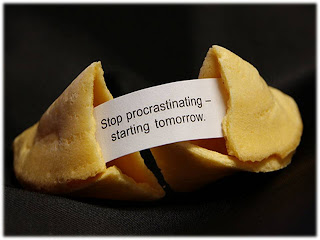"Anything you build on a large scale or with intense passion invites chaos." Francis Ford Coppola
I seem to have several conversations daily surrounding the same topic – scaling. There are millions of bright talented experienced business owners who want to grow their companies save a couple of crucial issues – time and money. There is no concrete way to control the speed of scaling but often it feels like it's not happening fast enough. Some days it moves at a snail's pace.
You want to grow your revenue line and you know in order to do that you need extra help but you can’t afford the extra help because you are too busy working on the current revenue stream. And you can't seem to grow the revenue because of all the prospecting and meeting and selling and trying to get your current client work done.
Sound Familiar?
This is an issue that has faced business forever. Others with much less money or experience have solved what each of us faces which perhaps makes our concerns even more annoying. We love to hear stories of people born of meagre means to fight and claw their way to a successful career.
We know we can do it but its a mix of our impatience and some pedestrian items we need to corral. Scaling is a challenge for everyone from sole proprietors to c-level executives of corporations with a global footprint.
Here is a list of things to think about (I know I do) when you look at how to scale your business...
Find the Quiet
Anyone who knows me, knows I have a busy brain. That does not always mean I’m getting it all done, sometimes quite the opposite. Busy doesn’t mean progress. Find those moments where you can shut it all off, listen to some music, put your feet up and clear your mind.
Be Honest About Your Effort
We can usually find external fault in the slower pace of our business growth. The truth is, we need to look inside to ensure we are doing all we can. That’s usually where the slowdown is occurring.
Stop Comparing Yourself to Others
We all do it and it is a complete and utter waste of time. We can claim that numbers and stature and position don’t matter (they don’t) but we make them far more important that they are, stop shaking your head, you do so.
Ask Often and Always
This is where most businesses fall apart. I know I see my work slow down when I stop asking for business. We get timid, we don’t want to appear to be selling, but without sales there is no business. Find
your way. No ask, no business.
Get Help
Small business, large corporation, c-level executive, sole proprietor, no one makes it on their own. No one. Ever. Surround yourself with a mastermind group of people from all walks of life with two purposes – to tell you the truth and to offer advice.
It’s Not Their Fault
When played properly, life is a team sport but we need to own our part.
Find the Decision Maker
How often have you had discussions with someone who can’t make the sale for you? Why would you try and sell to someone who isn’t in the position of buying? We've all done it far too often.
Be Clear About Your Offer
Elevator speech, website, social profile, in-person meeting, if you don’t believe what you are then no one will. Often companies get stuck or worse go backward when they begin to get unclear on their offer. Qualifying the sale is essential too. There's no sense talking to anyone - decision maker or not - if they're simply not interested.
Decimate the Naysayers
They are everywhere. Stay away from them. Delete them from your life. They will do absolutely nothing but derail you. Advice is fine, negativity is destructive.
Walk a Mile
This is not about comparing yourself to others but rather learning from others. Find people who have gone through what you’re going through. This is why some of the best hockey coaches are former hockey players. This is precisely why the most successful people have mentors.
Take it Offline
The online social networks are wonderful for finding like minded people along thought silos void of geographical limitations. Get on the phone, book a coffee or lunch, get out of the office and meet people in person or hear their voice. No social networking tool is more powerful than human interaction.
Be Sure You Want This
Follow your gut. Find the quiet. Get help. Listen to yourself and learn what you want.
Let's get back to work!
Kneale Mann
image credit: newmoon | original: mar 2011
 That is from an email a friend sent me. It caused me to pause and read the line a few times. I don't sell paint or fix plumbing or increase revenue in one meeting. The value I bring is tougher to measure in a world of instant wins and spams that claim to solve all your problems with a click of a mouse.
That is from an email a friend sent me. It caused me to pause and read the line a few times. I don't sell paint or fix plumbing or increase revenue in one meeting. The value I bring is tougher to measure in a world of instant wins and spams that claim to solve all your problems with a click of a mouse. 



















